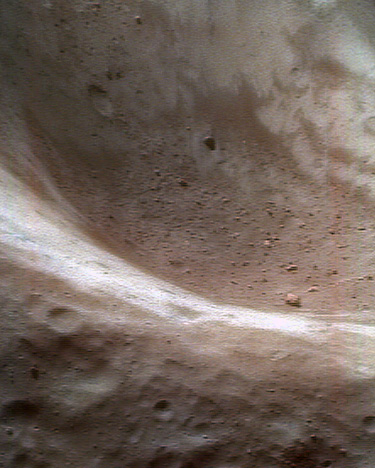The Regolith of Asteroid Eros

Explanation:
From fifty kilometers above asteroid Eros,
the surface inside one of its largest craters
appears covered with an unusual substance:
regolith.
The thickness and composition of the surface dust that is
regolith remains a topic of much research.
Much of the regolith on
433 Eros was probably created by numerous small
impacts during its long history.
In
this representative-color view taken by the
robot spacecraft NEAR-SHOEMAKER that
orbiting Eros from in 2000 and 2001, brown areas indicate
regolith that has been chemically altered by exposure to the
solar wind during
micrometeorite impacts.
White areas are thought to have undergone relatively less exposure.
The
boulders visible
inside the crater appear brown,
indicating either that they are old enough to have a
surface itself tanned by the
solar wind, or that they have somehow become
covered with some dark surface
regolith.
Authors & editors:
Robert Nemiroff
(MTU) &
Jerry Bonnell
(USRA)
NASA Web Site Statements, Warnings,
and Disclaimers
NASA Official: Jay Norris.
Specific
rights apply.
A service of:
LHEA at
NASA /
GSFC
& Michigan Tech. U.

